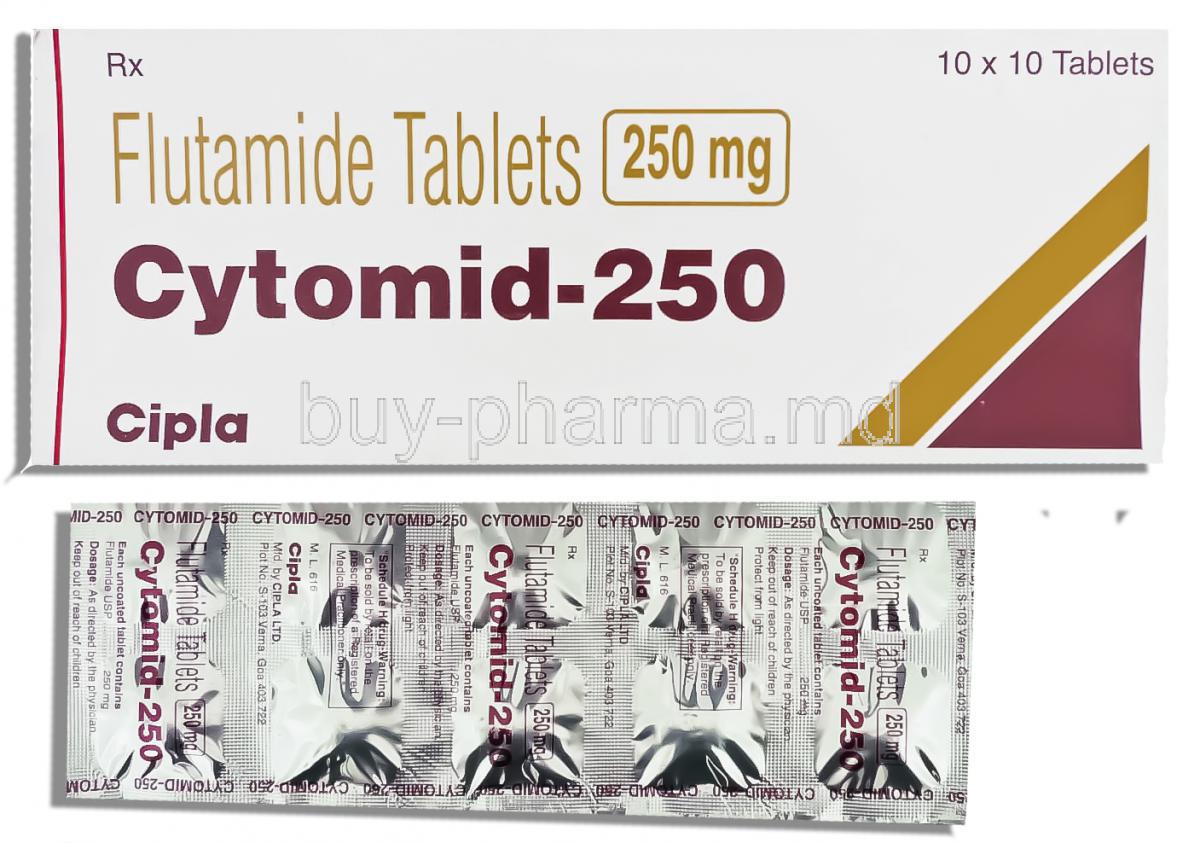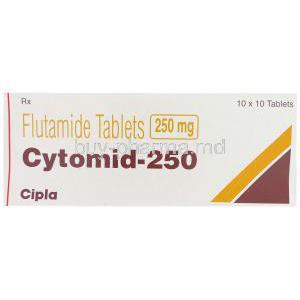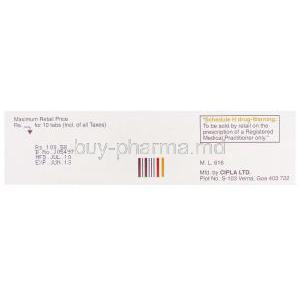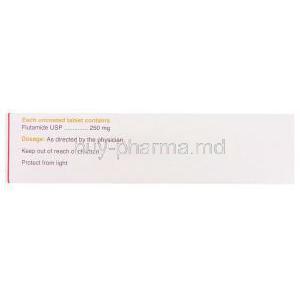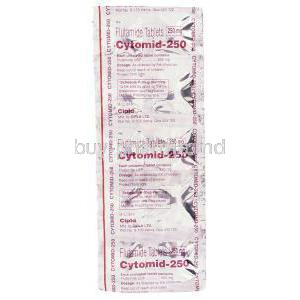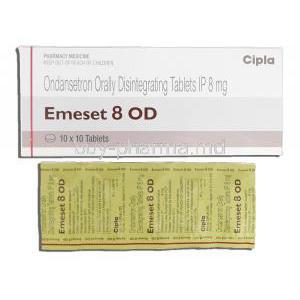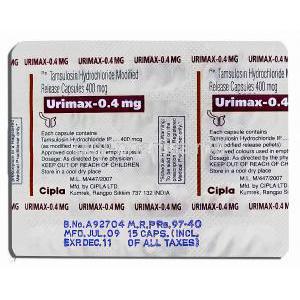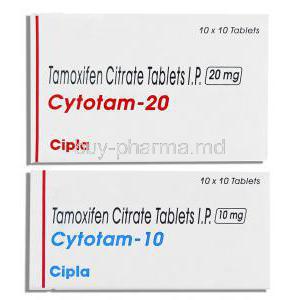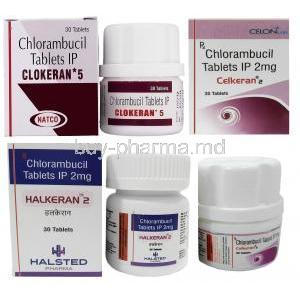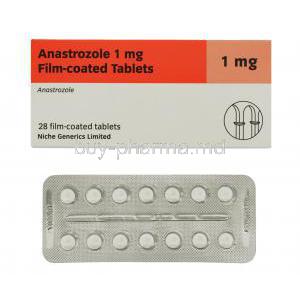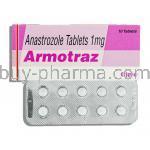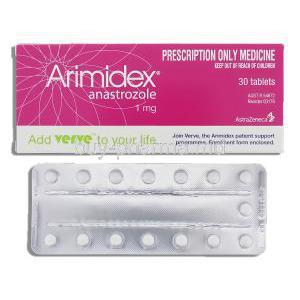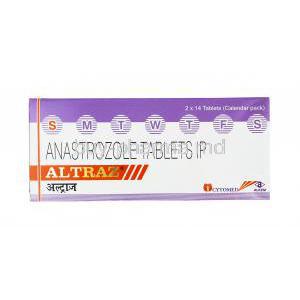Introduction
Overview of Cytomid (Flutamide)
Cytomid, known generically as flutamide, is a non-steroidal anti-androgen primarily employed in the management of prostate malignancies. By antagonizing the effects of male hormones, it mitigates androgen-driven disease progression. The drug is often regarded as a cornerstone in androgen deprivation strategies, complementing hormonal therapy in advanced stages of prostate carcinoma.
History and Development of Flutamide as an Anti-Androgen
Flutamide emerged during the latter half of the 20th century, at a time when the quest for chemical castration alternatives was intensifying. Its development marked a pivotal advancement in oncology, offering a non-invasive method to hinder testosterone’s proliferative effects on cancer cells. The introduction of flutamide shifted therapeutic paradigms, leading to the evolution of subsequent anti-androgens with refined pharmacological profiles.
Therapeutic Class and Classification within Non-Steroidal Anti-Androgens
Belonging to the category of non-steroidal anti-androgens, flutamide is distinct from steroidal analogues due to its selective receptor antagonism and reduced intrinsic hormonal activity. Classified under hormonal antineoplastics, it functions as a critical agent in combined androgen blockade protocols. This distinction ensures a more predictable safety profile compared with earlier steroid-based compounds.
Composition and Properties
Active Pharmaceutical Ingredient: Flutamide
The pharmacological activity of Cytomid stems from flutamide, a synthetic anilide compound. It possesses a high affinity for androgen receptors, effectively outcompeting endogenous ligands like testosterone and dihydrotestosterone (DHT).
Available Dosage Forms and Strengths
Flutamide is typically marketed in oral tablet form, with the most common strength being 250 mg. This standardized dosage allows for consistent therapeutic administration in clinical practice.
Excipients and Inactive Ingredients
Beyond the active moiety, Cytomid tablets incorporate excipients designed to stabilize, bind, and facilitate dissolution. Typical inactive constituents include starches, lactose monohydrate, magnesium stearate, and cellulose derivatives.
Mechanism of Action: How Cytomid Works
Anti-Androgenic Activity and Receptor Binding
Flutamide exerts its effects by competitively binding to cytoplasmic androgen receptors. This blockade prevents androgens from initiating transcriptional activity necessary for tumor cell survival and proliferation.
Inhibition of Androgen-Dependent Tumor Growth
By halting receptor-mediated gene expression, Cytomid suppresses the growth signals fueling prostate carcinoma. Over time, this leads to a reduction in tumor burden and symptomatic relief.
Pharmacodynamics and Pharmacokinetics
- Absorption: Rapid following oral administration, achieving peak plasma levels within hours.
- Metabolism: Extensively metabolized hepatically into active metabolites such as hydroxyflutamide.
- Excretion: Primarily eliminated through renal and fecal pathways.
Comparison with Other Anti-Androgens
Relative to newer agents such as bicalutamide or enzalutamide, flutamide demonstrates a shorter half-life and higher incidence of hepatotoxicity. Nevertheless, it retains clinical utility where cost and accessibility are prioritized.
Approved Medical Uses
Treatment of Metastatic Prostate Cancer
Cytomid is indicated as first-line therapy in metastatic prostate carcinoma, reducing androgen-mediated progression. Its benefits include palliation of bone pain and extension of progression-free intervals.
Use in Combination Therapy with LHRH Agonists
When combined with luteinizing hormone-releasing hormone agonists, Cytomid provides a more comprehensive androgen blockade. This dual strategy prevents initial testosterone surges associated with LHRH therapy, minimizing tumor flare.
Role in Advanced-Stage and Palliative Prostate Cancer Management
In terminal disease settings, Cytomid alleviates symptoms such as urinary obstruction and metastatic pain, contributing significantly to patient quality of life.
Off-Label Uses
Management of Hirsutism in Women
Flutamide has been prescribed off-label to women experiencing severe hirsutism. By dampening androgenic stimulation of hair follicles, it improves cosmetic and psychological outcomes.
Treatment of Acne and Androgenic Alopecia
Dermatological practitioners occasionally employ flutamide in cases of refractory acne and androgen-related hair loss, particularly when conventional agents prove inadequate.
Use in Transgender Women for Androgen Suppression
Within gender-affirming therapy, flutamide serves as an adjunct to estrogen therapy to reduce endogenous testosterone activity, facilitating feminization.
Potential Role in Polycystic Ovary Syndrome (PCOS)
Experimental use in PCOS aims to correct androgen-driven manifestations, though hepatotoxicity concerns limit its mainstream adoption in this population.
Dosage and Administration
Standard Dosage for Prostate Cancer Treatment
The conventional regimen consists of 250 mg orally three times daily, totaling 750 mg per day. This schedule ensures steady plasma concentrations for optimal receptor antagonism.
Timing and Frequency of Administration
Dosing is evenly spaced, typically every 8 hours. Administration with food may reduce gastrointestinal discomfort.
Dose Adjustments for Hepatic Impairment
Given the drug’s reliance on hepatic metabolism, caution is mandated in patients with compromised liver function. Periodic monitoring and dose modification are essential.
Titration Strategies for Off-Label Indications
Lower dosing protocols are often adopted for dermatological or gynecological uses, balancing efficacy with safety to minimize hepatic risks.
Administration in Special Populations
Elderly Patients: Pharmacokinetics, Sensitivity, and Monitoring
Older adults may exhibit altered pharmacokinetics due to reduced hepatic clearance. Enhanced vigilance is required, with regular liver enzyme assessments and dose optimization based on tolerance.
Pregnant Women and Nursing Mothers: Teratogenicity, Contraindications, and Excretion in Breast Milk
Flutamide is contraindicated during pregnancy due to teratogenic risks. Exposure can result in feminization of male fetuses. Nursing mothers are also advised against use, as excretion into breast milk poses potential hazards to neonates.
Children and Adolescents: Safety Concerns and Lack of Clinical Data
Pediatric use remains unsupported due to insufficient clinical evidence and potential for endocrine disruption. Off-label pediatric administration is strongly discouraged outside controlled clinical settings.
Side Effects of Cytomid
Common Side Effects
Cytomid, like other non-steroidal anti-androgens, frequently induces adverse reactions that are generally mild to moderate in intensity. Patients often report:
- Gynecomastia: Enlargement of male breast tissue, sometimes accompanied by pain.
- Breast tenderness: Sensitivity or discomfort in the chest region.
- Gastrointestinal upset: Manifestations such as nausea, diarrhea, or abdominal cramping.
- Decreased libido: Reduced sexual drive due to hormonal suppression.
- Hot flashes: Sudden sensations of warmth, flushing, or sweating, reflecting hormonal imbalance.
Less Common but Serious Side Effects
Although rarer, some toxicities require urgent recognition and discontinuation of therapy:
- Hepatotoxicity: Elevated liver enzymes, hepatitis, or even fulminant liver failure.
- Anemia: Suppression of hematopoiesis leading to fatigue and pallor.
- Interstitial lung disease: Inflammatory pulmonary reactions producing cough, dyspnea, and reduced oxygenation.
- Cardiovascular risks: Arrhythmias, hypertension, or thromboembolic events in predisposed individuals.
Long-Term Adverse Effects
Extended administration may alter systemic homeostasis:
- Bone density reduction: Androgen suppression accelerates osteopenia and osteoporosis.
- Hormonal imbalance: Chronic disruption of androgen–estrogen equilibrium can cause metabolic and endocrine shifts.
Drug Interactions
Interaction with Anticoagulants
Cytomid potentiates the effects of anticoagulants such as warfarin, heightening the risk of hemorrhagic complications. Close monitoring of the international normalized ratio (INR) is advised.
Effects on Cytochrome P450 Enzymes
Flutamide undergoes hepatic metabolism via cytochrome P450 systems, particularly CYP1A2. Concomitant drugs influencing these enzymes may alter therapeutic efficacy and toxicity.
Potential Interactions with Hormone Therapies and Anti-Cancer Drugs
Concurrent use with estrogenic agents, corticosteroids, or other anti-neoplastic regimens may amplify adverse events or attenuate therapeutic synergy. Careful titration is essential.
Alcohol and Dietary Considerations
Excessive alcohol consumption exacerbates hepatic strain, while high-fat diets may influence drug absorption and metabolic clearance.
Warnings and Important Precautions
Monitoring Liver Function During Therapy
Baseline and periodic assessment of hepatic enzymes is imperative. Early detection of abnormalities can prevent irreversible damage.
Risk of Hepatotoxicity and Jaundice
Signs of hepatic dysfunction such as yellowing of skin or sclerae necessitate immediate cessation of treatment and urgent medical evaluation.
Cardiovascular Monitoring in Patients with Comorbidities
Patients with pre-existing cardiovascular disease require close monitoring due to potential arrhythmic and thromboembolic risks.
Hormonal Imbalances and Endocrine Effects
Alterations in androgen–estrogen signaling may trigger secondary endocrine disturbances including gynecomastia and reduced fertility.
Contraindications
Known Hypersensitivity to Flutamide or Related Compounds
Patients with documented allergic reactions to flutamide or structurally related agents should avoid its use entirely.
Severe Hepatic Impairment
Because metabolism occurs predominantly in the liver, advanced hepatic dysfunction represents a strict contraindication.
Contraindication in Women Who Are Pregnant or Breastfeeding
Use during pregnancy can result in teratogenic effects, while breastfeeding may expose infants to drug metabolites. Both scenarios are considered absolute contraindications.
Careful Administration
Use in Patients with Pre-Existing Liver Disease
Hepatic pathology heightens vulnerability to drug-induced injury. Reduced dosing and stringent surveillance are advised.
Patients on Anticoagulation Therapy
Anticoagulated individuals require meticulous INR monitoring and possible dose modifications to mitigate bleeding hazards.
Patients with Cardiovascular or Respiratory Conditions
Underlying cardiac or pulmonary compromise necessitates individualized risk–benefit evaluation before therapy initiation.
Monitoring Requirements During Prolonged Treatment
Long-term therapy demands regular assessments of hepatic enzymes, blood counts, and bone density to detect latent complications early.
Overdosage and Emergency Management
Symptoms of Flutamide Overdose
Excessive intake may provoke gastrointestinal distress, methemoglobinemia, hepatic injury, and profound fatigue.
Supportive and Symptomatic Treatment Strategies
There is no specific antidote. Management centers on stabilization, symptomatic relief, and prevention of complications.
Role of Gastric Lavage and Activated Charcoal
In recent ingestion, gastric lavage or administration of activated charcoal may reduce systemic absorption.
Monitoring of Vital Functions and Liver Enzymes
Continuous monitoring of cardiac rhythm, respiratory status, and hepatic function is critical until clinical stability is achieved.
Handling and Storage Precautions
Recommended Storage Conditions
Cytomid should be stored at controlled room temperature, away from excessive humidity and direct sunlight. Stability is preserved in tightly sealed containers.
Safe Handling for Healthcare Providers and Caregivers
Tablets should be handled with dry hands, avoiding unnecessary contact. Caregivers should wash hands thoroughly after administration.
Disposal Instructions for Unused or Expired Medication
Unused tablets should be discarded through approved pharmaceutical disposal systems. Disposal via household waste or wastewater is discouraged due to environmental risks.
Conclusion
Summary of Therapeutic Role in Prostate Cancer
Cytomid remains a significant component of androgen blockade regimens, alleviating symptoms and extending disease control in advanced prostate carcinoma.
Balance Between Benefits and Risks
While highly effective in suppressing androgen-driven tumor growth, the drug’s toxicity profile requires cautious administration and vigilant monitoring.
Future Perspectives and Ongoing Research into Anti-Androgen Therapies
Emerging agents with enhanced selectivity and lower hepatotoxicity are reshaping therapeutic landscapes. Nevertheless, flutamide continues to serve as an instructive benchmark in the evolution of hormonal oncology.

